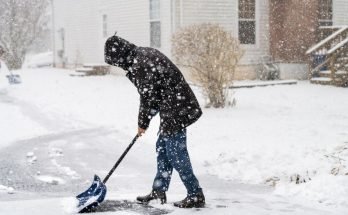Eventually, you will have to replace your roof. Jackson Contracting – Roofing Contractor says that if you are unsure whether you should replace your roof, you should call a roofing contractor to assess the condition of your roof and provide you with their professional opinion on its remaining lifespan.
Some roofing materials will last longer than others. Each material has its own vulnerabilities and strengths. The weather can take a huge toll on your roof. The changes in temperatures between the winter and summer months can cause your shingles to shrink, crack or even tear off during a storm. Even the strongest roofing system can become damaged in severe weather. These are the signs you should look out for.
Several Cracked And Missing Shingles
Replacing one or two shingles that are cracked or missing is easy, but it’s important not to delay since water and moisture can seep in through a poorly-sealed roof. The issue becomes more urgent when you have damaged or missing shingles in multiple parts of your roof.
Water Damage Inside Your Home
Some of the signs of a failing roof can be found inside your home. Water that enters your home through cracks or poorly-sealed sections of your roof can make its way into your attic and walls. After a storm, you should go into your attic or highest room and look for water spots and discolorations, which are often found in corners. If you don’t have an attic, you can check the ceiling for water spots that look orange-brown or have an irregular shape.
Sunlight Peeking Through
While you’re in your attic checking for signs of moisture damage and mold, you should also be on the lookout for the sunlight that could be entering through the boards or in corners where the roof is “lifting up” and away from your home. If sunlight is getting in, then water and rodents can also get in.
Damaged Or Clogged Gutters
Poor drainage can affect the soil around your home, eventually leading to foundation damage. A roofing contractor can replace your gutters and downspouts with larger ones if the problem is consistent.
Sunken Roof
Roof sagging is often caused by the support beams not being able to hold up strongly under the weight of water or snow that has accumulated on your roof. When moisture gets into the wood decking of the roof, it can lead to mold, which softens and weakens the decking.
Some shingles weigh more than others. Trusses provide support for your roof and shingles, and should be installed close together to support heavier shingles. If the trusses are compromised by mold, then your roof can sag under the strain of the weight.
How To Protect Your Roof
The best way to protect your roof is to have it professionally evaluated by a roofing contractor twice a year, preferably in the spring or fall. These seasons occur just before the two wettest seasons, summer and winter, which is why they are a better time to fix any potential problems before your roof is pummeled by precipitation. A roofing contractor can help you save on roof replacement costs in the long run by repairing small issues before they have a chance to spread and compromise your roofing system.




